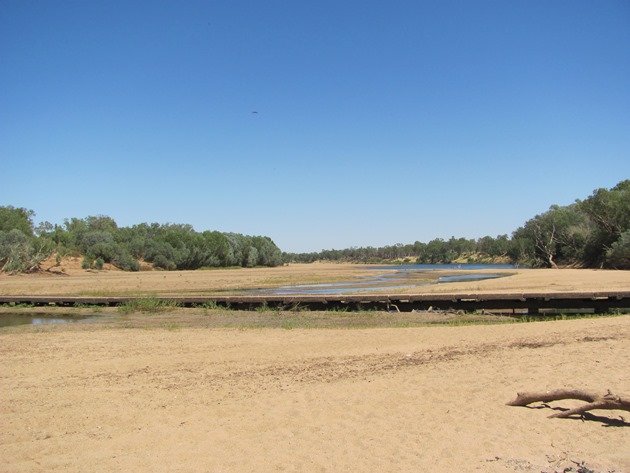
On our recent camping and birding trip away we passed through the small town of Fitzroy Crossing, which is the next town along the Great Northern Highway heading north and is approximately 400 kilometres from Broome. It is on the banks of the Fitzroy River, which floods during the wet season months each year. The river levels are currently low and offer water to the surrounding birds and wildlife. Fitzroy Crossing was first explored by Captain Stokes in 1838 and it was named after Captain Robert Fitzroy, who had been the commander on the HMS Beagle. Following the exploration the area was developed as sheep stations around 1882. The population of the town nowadays is mostly indigenous Australians and is only about 1,100 people, with a further 2,000 people in outlying areas around the Fitzroy Valley. The first river crossing was built in 1935, but would be impassable for a good part of the year. The bridge was improved in 1958, but would still make the main highway through the north of Australia impassable for months on end. Finally, in 1974, a new bridge was built 3 kilometres to the south and it does remain open for most of the year.
This low level bridge, that was built in 1935, is an excellent place to go bird watching in the winter months and is actually more of a causeway than anything. You can access it easily on the way to Geikie Gorge by turning to your right towards the Fitzroy River and cross over to the far side to park in the shade of the tall trees. The gravel road then continues on to re-join the Great Northern Highway on the far side of town. At the moment the paperbark trees are in full blossom and they are attracting some excellent birds. Banded Honeyeaters, Brown Honeyeaters, Rufous-throated Honeyeaters, Black-chinned Honeyeaters, Yellow-tinted Honeyeaters and Little Friarbirds were feasting on the nectar during our visit.
Flowering paperbark trees
When we first pulled up in the shade of the large trees we could hear Variegated Fairy-wrens and we soon discovered them bouncing about in the dense undergrowth. Shortly after we heard the sound of Varied Sittellas and we soon observed them hanging under the leaves on the tall trees above us. We were soon distracted by the raucous call of a Great Bowerbird and realised it had a bower under the dense bush where the Varied Fairy-wrens were. We wandered over to investigate what a Great Bowerbird would collect near the township of Fitzroy Crossing and we were delighted to find quite an assortment of treasures. Some plastic items, small rocks, bones, ring-pulls, native plant fruit and the most surprising items were all of the marbles! We had no idea there were still children playing with marbles in Australia! There’s a good chance the bower gets washed away some years, but it would also be moved and rebuilt close by each new season and no doubt these marbles are quite a treasure to the Great Bowerbird who is trying to attract a mate with the items in the bower. It is impressive when Great Bowerbirds collect any item, but carrying a perfectly round and large object is especially impressive!
Great Bowerbird bower
The collection of items around the bower
One large marble from the bower!
Wandering down onto the causeway we observed a juvenile Black-necked Stork and we slowed our pace to allow it to wander off, which it duly did and found a place in the shade. It was accompanied by a Black-fronted Dotterel on the water’s edge and there is quite some size difference as you can see below.
Juvenile Black-necked Stork
Juvenile Black-necked Stork and Black-fronted Dotterel at the water’s edge
A pair of agile wallaby wandered down to the water’s edge to take a drink and they are well camouflaged on the riverbed sand.
Agile wallaby
A Common Sandpiper had returned from the north and found the Fitzroy River to be a good place to feed and was joined by Straw-necked Ibis, Glossy Ibis, Australian White Ibis and a White-faced heron.
Straw-necked Ibis
The riverbed of the Fitzroy River is a great place to run down to get a drink if you are a Spinifex Pigeon and they are often in quite large flocks. They really do look like quite characters as they run around with their tall head feathers! Often you don’t even see them until they run ahead!
Spinifex Pigeons
The birding around the low level bridge is very diverse and birds of prey include Black Kites, Whistling Kites, White-bellied Sea-Eagles and a Brown Goshawk. Other water birds included Australasian Darter, Great Egret, Little Egret, Intermediate Egret, Masked Lapwings and Little Pied Cormorant. Among the trees along the riverbank were Black-faced Woodswallows, Little Woodswallows, Yellow-throated Miners, Black-faced Cuckoo-shrikes, White-bellied Cuckoo-shrikes, Double Barred Finch, Zebra Finch, Grey-crowned Babblers, Little Corella, Sulphur-crested Cockatoos, Galahs, Rainbow Bee-eaters, Paperbark Flycatchers, Rufous Whistler, Blue-winged Kookaburras, Bar-shouldered Doves and Diamond Doves. It is definitely worth a stop if you are passing through Fitzroy Crossing in your travels along the Great Northern Highway! Should you have some spare marbles, then you could always leave them for a Great Bowerbird to use to attract a mate!


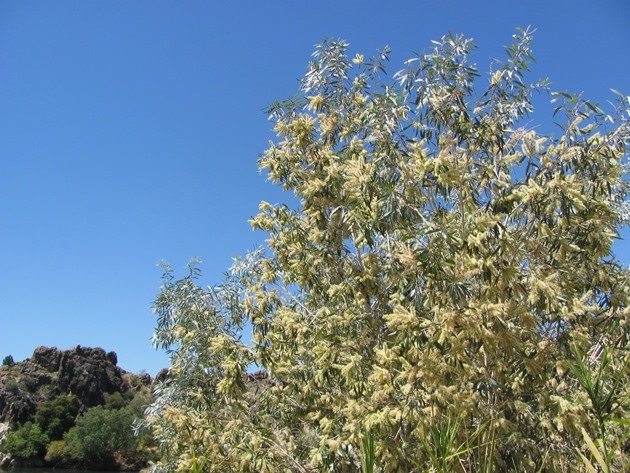
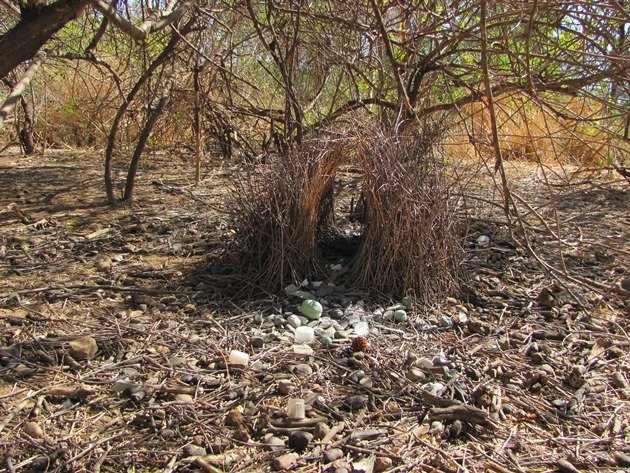
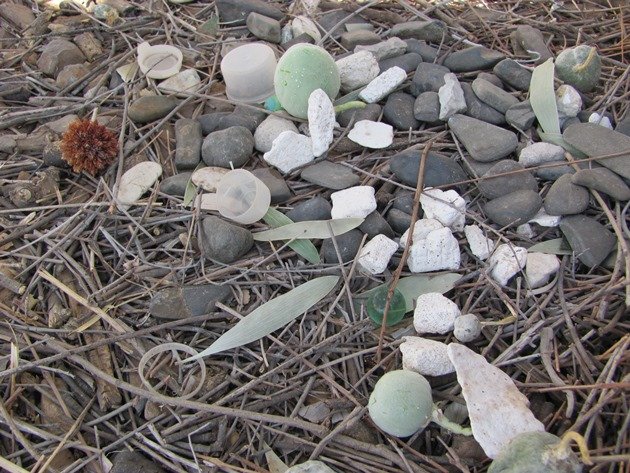
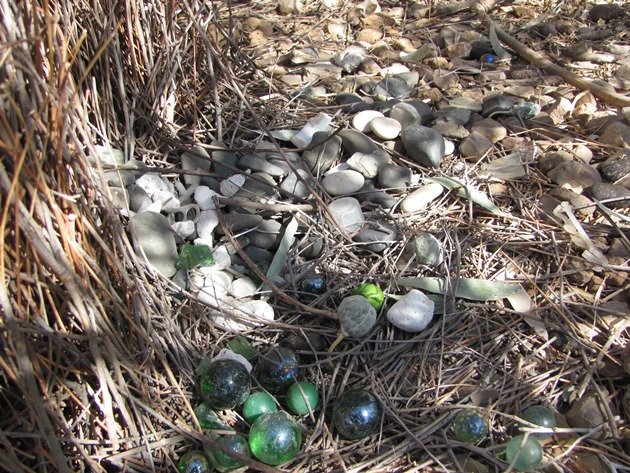
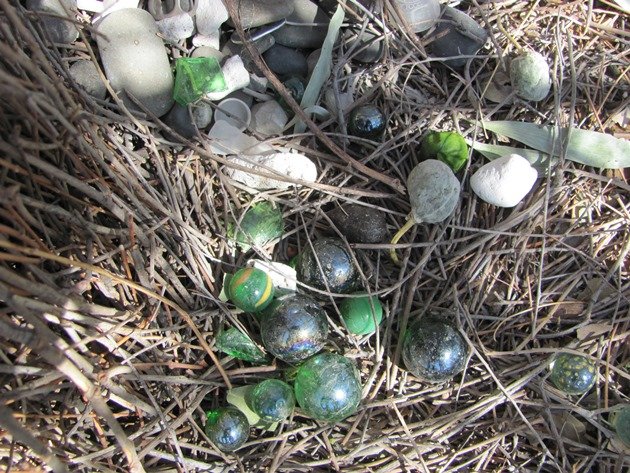
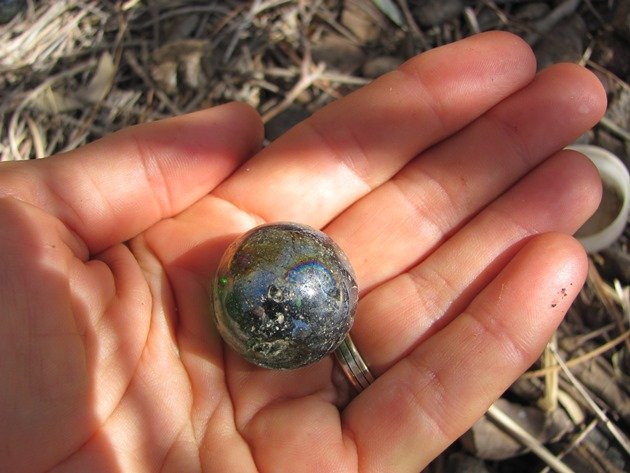
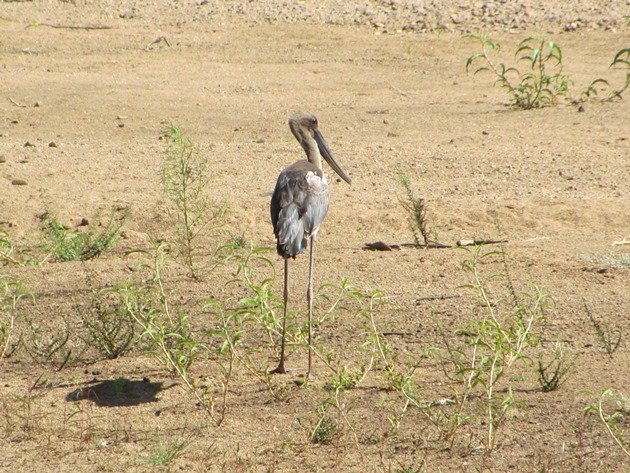
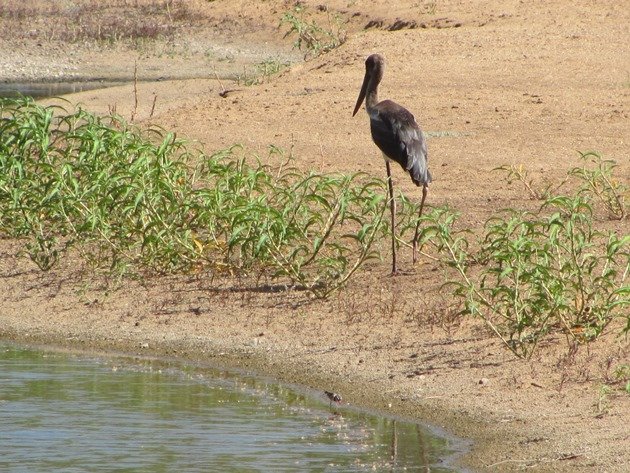
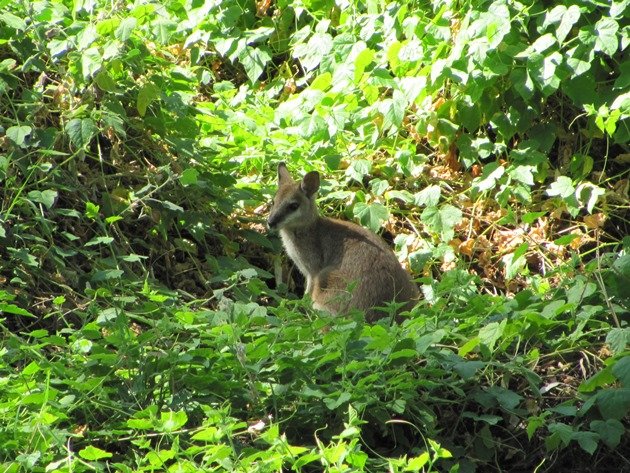
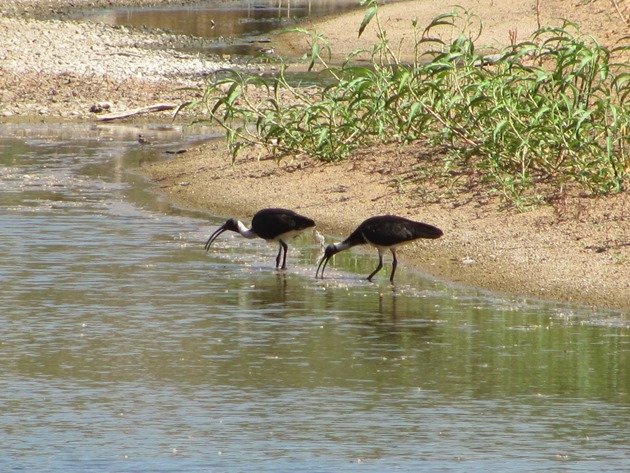
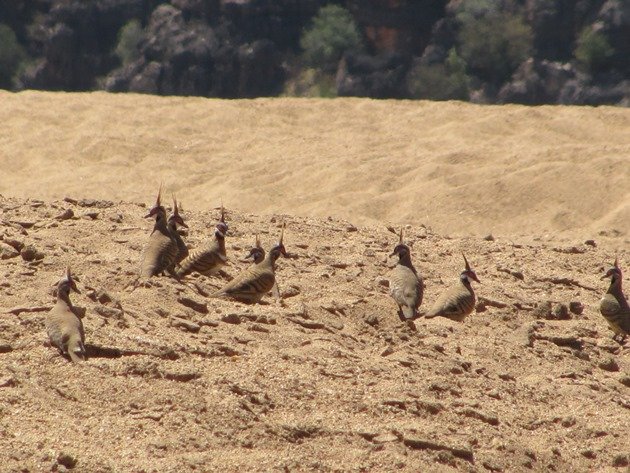








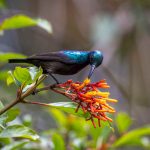


I remember biking across that bridge almost exactly 10 years ago. It looked just like the top photo 😉 Unfortunately, I didn’t see any bowers that time.
I remember you commenting about your ride two years ago and wonder if you still cycle the globe or just your home patch?
We are just lucky at finding bowers I think! 🙂
Indeed, recent years have involved spinning around the local patch almost exclusively.
The Cape York Peninsula still beckons, however. 😉
Great! 🙂
Wow, the fact that you can find amazing marbles while birding might be very handy in recruiting new birders – like seven-year-old boys. 🙂
Do children still play with marbles in Germany? 🙂
Well, now that you mention it: no. However, you could probably sell marbles by the metric ton if you printed Star Wars on the package. Heck, right now you could sell anything to kids so long as you “put a Vader on it”.
Hmmm, maybe re-naming your current standard field guide “The Star Wars Guide to the Birds of Australia” would get you more new young birders than you can handle…